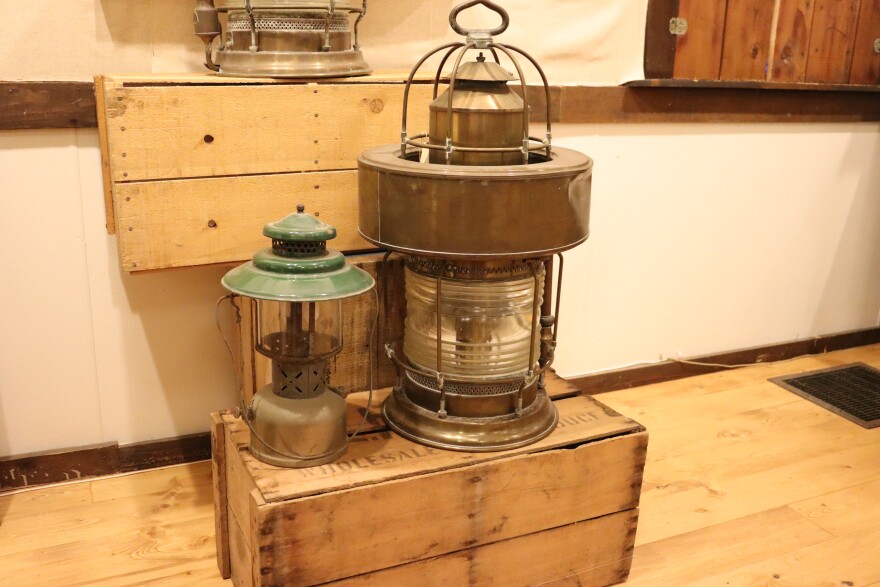Before the days of a reliable road system, much of the Kenai Peninsula could only be accessed via boat. A popular but challenging entry point from Cook Inlet is the Kasilof River, which has been used by mariners since the construction of the peninsula’s first salmon cannery in the late 1800s. With an increase in vessel traffic, the Coast Guard added two navigation beacons in the form of kerosene lanterns near the mouth of the river in 1929.
Light from the two-foot-tall lanterns could be seen up to five miles away. They operated seasonally, and were maintained by local citizen lamp lighters until they were replaced by electric beacons in 1962. They are believed to be the last oil-burning lanterns used for navigation purposes on the American coast.
“The river channel is pretty squirrelly, because Cook Inlet has so much sediment, and it has such huge tides that there’s no direct line from offshore into the mouth of the river,” said Catherine Cassidy, secretary of the Kasilof Regional Historical Association. “Even today, on charts, they said that local knowledge is very important for navigating into the river.”
After the lanterns were retired, the Coast Guard offered them to the Smithsonian Institution in Washington D.C. Kasilof Regional Historical Association President Brent Johnson orchestrated bringing the artifacts back home. He suspects they were never put on display at the institute.
“I thought ‘I’ll bet you they’re sitting in a backroom that nobody ever looks at at the Smithsonian, when they could be here in our museum where they belong,’” Johnson said.
Johnson, who now sits on the Kenai Peninsula Borough Assembly and serves as its president, says he remembers seeing the lanterns in use while duck hunting as a child. Cassidy says she was unaware of the existence of the lanterns, and was doubtful they could be located at the Smithsonian.

“They not only could locate them in their storage right away, they said they would be happy to have these lanterns back in Kasilof where they are meaningful to people,” Cassidy said. “They were really delighted to give them to us, it’s so cool.”
The Kasilof Historical Museum acquired the kerosene lanterns this fall and is working to create a display for the artifacts. Historical association members believe these lanterns are a symbol of the peninsula’s maritime history that is still relevant today.
“This is old history encapsulated in these lanterns,” Cassidy said. “It’s an ongoing part of our community to have access to this river.”
“History changes,” Johnson said. “One thing that is super important at one point in history becomes less important at another point. I think those navigational lights are still important because people are still using the Kasilof River.”
The Kasilof Historical Museum is located on Kalifornsky Beach Road in Kasilof, a half mile north of the Sterling Highway. The museum is open 1 to 4 p.m. every day Memorial Day through Labor Day. You can view the lanterns beginning this summer.




